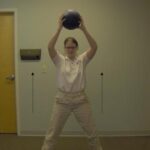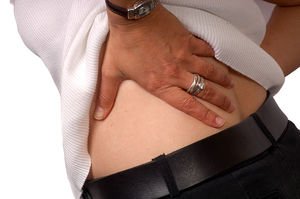Given the work and demand places on the human leg, it’s surprising that muscle injuries to the hamstring and quadriceps, the muscle groups in the front and back of the upper leg, don’t happen more frequently. While these two sets of muscles function inversely with each other, the tremendous power and energy exacted on them can be amazing when measured with computers and sensors. Keep in mind, this is the system that essentially propels your entire body weight, and whatever you are carrying, AND typically can produce more energy to push more weight above all of that.
The above said, injury does occur and a muscle tear is no laughing matter. Even a partial tear can disable a person from being able to run up to six months after the event. Further, once a muscle has been injured, it can be prone to tearing again. As a result, proper healing technique remains critical to full recovery.
The most frequent type of hamstring or quadriceps injury remains either the strain or pull. Tears occur as well, but they usually happen after the muscle has already been injured by the first level damage. Neither muscle group is immune to these types of injuries, and when one group is injured it can make the other prone to injury as well as the healthy parts of the leg try to overcompensate for the injured area. In comparison, the quadriceps are harder to injure since they work as a set. This allows the muscle group to spread the strain or damage. The hamstring is one main muscle, so it can be hurt far worse in the same kind of event.
Above pulls and strains come actual muscle tears, the first grade being what is known as a partial tear. The more serious type requiring surgery is a full tear. The hamstring remains more prone to serious damage than the quadriceps in this regard. However, if the event involves extreme twisting in motion, the quadriceps can be torn. Forward motion activity as in running distance or speed frequently harms the hamstring if over-done. Where motion involves force, speed, and quick direction changes as in football or soccer, the twisting forces can exert significant pressure on the quadriceps since they take on much of the stopping, turning and starting force.
Recovery of partial tears basically involves rest, application of ice, wrapping with compression, and keeping the leg raised. All reduce the swelling from damage and allow the leg to heal. Repair time can take up to six months, so a patient is unlikely to go out for a sprint two weeks later. Depending how bad the partial tear is, bruising can occur which will go away with time. Normally, the partial tear feels like a golf ball-sized lump in the back of the upper leg. After about four weeks at the latest, rehabilitation should begin with gentle stretching and exertion. This will force the muscle group to heal properly rather than building up scar tissue that can tear easily again. Continued icing and stretching for the next months are critical. Exercise can be performed but low impact system should be used such as bicycling or elliptical machines.
Recovery from a muscle separation or full tearing will not happen at home. Because the muscle at the hamstring or quadriceps is under tension naturally, it will not grow back and reattach on its own. Surgery will be necessary to go in and artificially reattach the muscle at the injury point. In the old medieval days, a full tear meant permanent disability, ergo the term “hamstrung” and “hamstringed” in the English language. Surgery instead involves an invasive procedure to go in and staple the muscles together again, allowing a healing connection. In many cases the leg will not be fully recovered and some adjustment to lifestyle may be necessary in the long-term.
Any injury to leg muscle group should always be taken seriously as a bad one can damage a person permanently. With discipline in healing, many minor to medium injuries can be recoverable, with a patient being able to run and be active again within a year. The critical factor involves not pushing the healing beyond what is possible due to impatience. Waiting a few months to be active again can be the difference between a lifetime of using your leg normally or being hobbled repeatedly by chronic muscle injuries in the same area.
Sources:
Medscape; Quadriceps Injuries; Thomas DeBerdardino; January 2010.
Runners Rescue: Quadricep Strain and Running
Sports Injury Clinic: Pulled Hamstring/Hamstring Strain
Metro Sports Report: Hamstrung by a Hamstring Pull?; John Tomberlin; April 2011.



